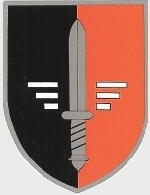Corgi AA27106 German Messerschmitt Bf 109G-2 "Gustav" Fighter - Oberleutnant Gunther Rall, Staffelkapitan 8./Jagdgeschwader 52, Gostanovka, Russia, August 1942 (1:72 Scale)
"We did not think about the personal nature of killing in the air. We were proud of every victory in the air, and particularly happy that we had not been hit ourselves. Of course, I tell myself in quiet moments today: 'You've killed. In order to protect others and not be killed yourself.' But in the end: for what? The Third Reich trained 30,000 pilots. Ten thousand survived the war. One-third. This is the highest loss rate along with the U-boat sailors."
- Oberleutnant Gunther Rall
 Numerically the most abundant fighter produced by either side during WWII, the Messerschmitt Bf 109 formed the backbone of the Jagdwaffe on both the eastern and western fronts, as well as in the Mediterranean and North Africa. Of the eight distinct sub-types within the huge Bf 109 family, the most populous was the G-model, of which over 30,000 were built between 1941-45. Despite its production run, only a handful of genuine German Bf 109s have survived into the 1990s, and with the serious damaging of the RAFs G-2 at Duxford in October 1997, only the German-based MBB G-6 and Hans Ditte's G-10 (both composites) are currently airworthy.
Numerically the most abundant fighter produced by either side during WWII, the Messerschmitt Bf 109 formed the backbone of the Jagdwaffe on both the eastern and western fronts, as well as in the Mediterranean and North Africa. Of the eight distinct sub-types within the huge Bf 109 family, the most populous was the G-model, of which over 30,000 were built between 1941-45. Despite its production run, only a handful of genuine German Bf 109s have survived into the 1990s, and with the serious damaging of the RAFs G-2 at Duxford in October 1997, only the German-based MBB G-6 and Hans Ditte's G-10 (both composites) are currently airworthy.
The Bf 109 G-series was developed from the largely identical F-series airframe, although there were detail differences. Modifications included a reinforced wing structure, an internal bullet-proof windscreen, the use of heavier, welded framing for the cockpit transparencies, and additional light-alloy armor for the fuel tank. It was originally intended that the wheel wells would incorporate small doors to cover the outer portion of the wheels when retracted. To incorporate these the outer wheel bays were squared off. Two small inlet scoops for additional cooling of the spark plugs were added on both sides of the forward engine cowlings. A less obvious difference was the omission of the boundary layer bypass outlets, which had been a feature of the F-series, on the upper radiator flaps.
Like most German aircraft produced in World War II, the Bf 109 G-series was designed to adapt to different operational tasks with greater versatility; larger modifications to fulfill a specific mission task, such as long-range reconnaissance or long-range fighter-bomber, were with "Ruststand" and given a "/R" suffix, smaller modifications on the production line or during overhaul, such as equipment changes, were made with kits of pre-packaged parts known as Umrust-Bausatze, usually contracted to Umbau and given a "/U" suffix. Field kits known as Rustsatze were also available but those did not change the aircraft designation. Special high-altitude interceptors with GM-1 nitrous oxide injection high-altitude boost and pressurized cockpits were also produced.
Pictured here is a 1:72 scale replica of a German Messerschmitt Bf 109G-2 "Gustav" fighter that was flown by Oberleutnant Gunther Rall, who was Staffelkapitan 8./Jagdgeschwader 52, then deployed to Gostanovka, Russia, during August 1942.
Sold Out!
Dimensions:
Wingspan: 5-1/2-inches
Length: 5-inches
Release Date: September 2016
 Historical Account: "Experten" - Flying the Bf 109 throughout his service career, Luftwaffe fighter ace, Gunther Rall, ended the war with 272 aerial victories, making him the third most successful fighter ace of all time. Serving through the battles of France and Britain, it was not until his involvement in Operation Barbarossa that his victory tally began to increase in spectacular fashion. After the war, Rall offered his services to the RAF in evaluating the Messerschmitt Me 262 jet fighter, where he became firm friends with RAF ace Robert Stanford Tuck. He was also the star of many WWII documentaries on the subject of Luftwaffe operations and air combat in general.
Historical Account: "Experten" - Flying the Bf 109 throughout his service career, Luftwaffe fighter ace, Gunther Rall, ended the war with 272 aerial victories, making him the third most successful fighter ace of all time. Serving through the battles of France and Britain, it was not until his involvement in Operation Barbarossa that his victory tally began to increase in spectacular fashion. After the war, Rall offered his services to the RAF in evaluating the Messerschmitt Me 262 jet fighter, where he became firm friends with RAF ace Robert Stanford Tuck. He was also the star of many WWII documentaries on the subject of Luftwaffe operations and air combat in general.
The absolute epitome of WWII fighter design, the Messerschmitt Bf 109 series of fighters have to be regarded as amongst the finest aircraft of all time. Serving throughout the Second World War, the Bf 109 was the most heavily produced fighter in history and was the mount of some of the most prolific fighter aces of WWII. The basic air frame was flexible enough to allow constant upgrades throughout its service career and in tandem with the Focke Wulf Fw 190, provided the backbone of Luftwaffe offensive and defensive fighter support throughout the war. Small, light and powerful, with both cannon and machine gun armament, the Messerschmitt Bf 109 always posed a significant threat for Allied pilots and in the hands of an Experten, you were in real trouble!


